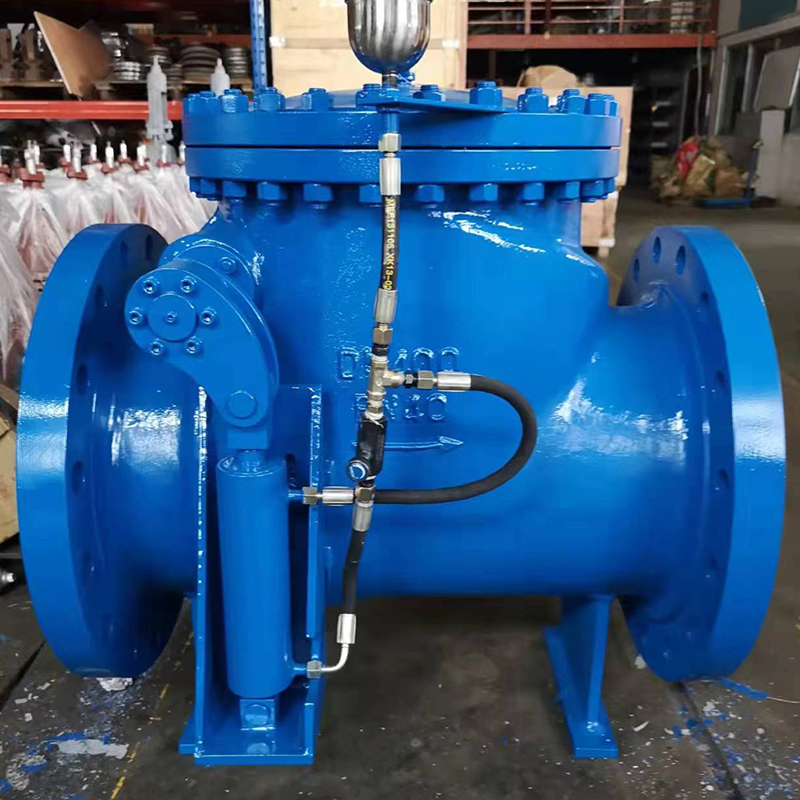
Valves play a central role in controlling and directing flow in a wide range of piping systems. From industrial plants to municipal infrastructure, selecting and understanding the proper valve type ensures efficiency, reliability, and safety. This article highlights three specific valve types—the Flanged Check Valve, the Swing Check Valve, and the Cast Steel ANSI Gate Valve—focusing on their usage guidelines, manufacturing processes, and functional properties.

The Flanged Check Valve is a type of non-return valve that allows fluid to flow in one direction and prevents backflow. It is commonly used in water systems, pump lines, and chemical pipelines to maintain unidirectional flow and protect equipment from reverse pressure.
When using a flanged check valve, several practical considerations should be observed:
Proper Orientation: The valve must be installed with the flow arrow pointing in the direction of the intended flow. Incorrect orientation will result in the valve failing to open or close properly.
Suitable Flow Conditions: Flanged check valves operate better in systems with consistent flow velocity. Intermittent or low-pressure flow may valve chatter, which can cause premature wear.
Correct Sizing: Selecting the correct valve size for the pipe diameter and flow rate is essential. An oversized or undersized valve may not seat correctly or respond efficiently to pressure changes.
The Swing Check Valve is a widely used design that incorporates a disc mounted on a hinge or shaft. When fluid flows in the forward direction, the disc swings open. When flow stops or reverses, the disc swings shut, preventing backflow.
The molding process of a swing check valve primarily applies to the production of its main body and bonnet components, which are often made of cast iron, ductile iron, bronze, or stainless steel. Here's a general overview of how molding contributes to valve quality:
Pattern Making: The process begins with creating a precise pattern of the valve body. This pattern reflects the final shape and dimensions required for proper seating and sealing.
Sand Casting: Many swing check valve bodies are produced using sand casting. The pattern is used to create a cavity in sand molds, which are filled with molten metal. The quality of the mold affects the surface finish and dimensional accuracy of the valve.
Cooling and Cleaning: After pouring, the mold is cooled, and the solidified casting is removed. Surface cleaning and trimming are then performed to eliminate rough edges and excess material.
The Cast Steel ANSI Gate Valve is a linear motion valve designed to start or stop flow in a pipeline. It is not typically used for flow regulation, as partial opening can cause damage to the seating surfaces. These valves are governed by ANSI (American National Standards Institute) specifications, ensuring uniformity in pressure ratings, dimensions, and material standards.
Key characteristics of cast steel ANSI gate valves include:
Material Strength: Cast steel is selected for its high tensile strength and resistance to pressure and temperature fluctuations. This makes the valve suitable for steam, oil, gas, and high-pressure water applications.
Full Port Design: ANSI gate valves often feature a full-bore design, allowing fluid to flow through the valve with minimal pressure drop when fully open.
Wedge Type Gate: Many gate valves use a solid or flexible wedge that moves vertically between two seats. This design provides a tight shut-off when fully closed and is less prone to leakage.
Standards Compliance: Valves manufactured to ANSI standards must adhere to specific dimensions, pressure classes (such as Class 150, 300, or 600), and testing protocols. This ensures compatibility in industrial systems and facilitates replacement or integration.
Maintenance Access: Bolted bonnet designs allow easy access to internal components for inspection, repair, or seat replacement without removing the valve from the pipeline.

